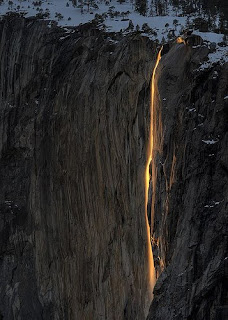The Almanac - Page 2 - Metering & Exposure
Published by Hari Kumar Balasundaram under almanac, Chennai Trekkers, CTC, CTC Studio, Perspective, Photography, tutorials on 5:16 AMNow what if the camera were to focus on the volcano – the rocks would simply be too dark and the camera’s light meter would also adjust here for 18% light and shall render the volcano also as grey and not black as the case may be ..
What if the Sun whose light is reflected by the snow and the volcano is suddenly covered by clouds – although the sun’s intensity has not reduced – the incident light does not reach the snow or the volcano and therefore the reflectance has changed.
In each of these cases – the camera’s exposure setting either is over or underexposed
Now - Imagine if you were to focus the grass incident on the ground with the volcano, the camera would return medium light values as the grass is devoid of such high reflectance as snow or volcano and therefore offers a perfect exposure setting for the shot.
The above setting offers a clue to obtaining a correct exposure – i.e. Under a given lighting condition, meter off a subject of medium brightness to select shutter speed and aperture and then use these same settings to photograph subjects of different reflectivity.
For eg. At a given ISO of 100, if the automatic settings of the camera were to return values of shutter speed of 1/125 at F 22 . But to make the snow whiter – we need to choose either F11, F8 or F5.6 but which one .. By metering on the grass below – the camera now adjusts for the right medium values as F11 at 1/125 secs. By shooting now at F11, we are now telling the camera that it needs more light to shoot a snow covered volcano for a perfect shot i.e ...
Similarly for the volcano – the camera might select F5.6 at 1/125 sec for a grey toned volcano and to make this dark – we would need to reduce the exposure of the sensor. This can easily be done by metering off the grass which would return values of F11 at 1/125 of a sec. If we were to shoot the volcano now – the colour of the volcano would return dark and this would be a perfect exposure.
We have just discovered that be it shooting the snow or the volcano – the correct exposure is F11 at 1/125 of a sec.
With this understanding – do you really think that the reflectivity of the subject has any role to play in the exposure settings. Actually speaking – the reflectivity of the subject is important in one sense that we need to capture the true nature of light incident on the subject when we are shooting.
But the key is we do not want to negate this effect; we want the reflectivity of the subject to directly influence the exposure in order for the subject to look realistic in the photo. The problem is that the camera's automatic exposure system does negate this effect with its assumption that all subjects are of medium reflectivity, resulting in incorrect exposures for all but medium brightness subjects.
To summarize so far, of the four factors affecting exposure, the photographer only has control over the shutter speed and aperture (factor 3), and ISO (factor 4).
Assuming a given film speed, the photographer must choose a shutter speed and aperture based on the amount of light incident on the subject (factor 1) and the reflectivity of the subject (factor 2).
But as seen above, because we want to realistically portray the brightness or darkness of the subject, the reflectivity of the subject should not really affect the choice of shutter speed and aperture.
Thus, the amount of light incident on the subject remains as the primary factor controlling exposure. Therefore - For correct exposure, we must assess this factor and select an appropriate shutter speed and aperture for the photograph.
we shall continue on our understanding of metering and metering systems in the next blog .. Following up on the temples of Cambodia - Here's our stunning pick of the week by Jeff sullivan



0 comments:
Post a Comment